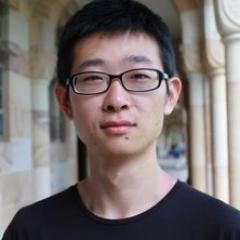Digital Sewer
Sewer systems protect both public and environmental health, by collecting and transporting domestic and industrial wastewaters to treatment plants for pollutant removal. Sewer management is currently reactive but should be more proactive, which requires digitalisation for network-wide monitoring and real-time control. The current roadblock for the digitalisation of sewer management is the lack of advanced algorithms for the systematic analysis and integrated use of network-wide monitoring data. The recent rapid development in low-cost Internet of Things (IoT) sensors, low-power wireless data transmission capabilities, and machine-learning provides a potential solution to the issue. However, the digitalisation of sewer management is challenging, due to a more complex nature of sewer systems in terms of hydraulics as well as in-sewer physical, chemical and biochemical processes.
This project will enable a step change in digital sewer management through a whole-of-system approach with descriptive, diagnostic, predictive and prescriptive algorithms to enable the integrated analysis and utilisation of network-wide sewer data. In this project, the research and industry partners will work collaboratively to co-develop the framework, and data analytics – the descriptive (what is happening), diagnostic (why is it happening), predictive (what is going to happen), and prescriptive (what should be done) – to provide foundational support to digital sewer management.
Project Outcomes
- Autoregressive with exogenous inputs (ARX) models were developed for real-time prediction of sewage coming into sewer pumping stations (SPSs). The models regress historical sewage inflow with simultaneous consideration of rainfall data as an exogenous input. The approach was validated at multiple SPSs with different hydraulic characteristics and catchment features, both achieved good prediction performance during both dry weather and wet weather.
- Swift hydraulic models were developed for computing hydraulic characteristics at any location and any time in rising main and gravity sewers across sewer network. The models have high fidelities to the full Saint-Venant Equations on solutions and accelerate the computing speed by up to four orders of magnitude.
- Real-time control (RTC) strategies were established for chemical distribution in sewer networks to mitigate the corrosion and odour problems in sewer networks. For large networks, the high computational load is reduced using a newly proposed optional-event-driven strategy, with which optimisation is not triggered by less significant pumping events. An improved elephant herding optimisation (iEHO) algorithm selects appropriate control actions for multiple pumps with both the control performance and chemical costs consider. The algorithm presented satisfactory convergence rates in an astronomical searching space.
Expected outcomes in the future include:
- Novel approaches to incorporate digital twins in data analytics, in support of smart monitoring, sewer functional analysis, real-time control and long-term decision making;
- Novel machine-learning methods to verify sensor data quality, identify faults in data/sensors, and reconstruct the missing/incorrect data;
- Soft sensors to estimate critical variables that cannot be cost-effectively measured;
- Digital-twin-supported data analytics to determine the functional states of the sewer network;
- Novel real-time optimisation algorithms, supported by efficient data-driven predictive models to achieve network-wide real-time control.
Funding
- Australian Research Council
- City of Gold Coast
- SA Water
- The University of Queensland
- Urban Utilities
Collaborators
- City of Gold Coast
- NextGen Water
- SA Water
- Urban Utilities
- Water Corporation, Western Australia
Publications
Papers
- Li, J., Sharma, K., Li, W. and Yuan, Z. (2022) Swift Hydraulic Models for Real-time Control Applications in Sewer Networks. Water Research 213, 118141.
- Li, J., Li, W., Chang, X., Sharma, K. and Yuan, Z. (2022) Real-Time Predictive Control for Chemical Distribution in Sewer Networks using Improved Elephant Herding Optimization. IEEE Transactions on Industrial Informatics 18(1), 571-581.
- Yuan, Z., Olsson, G., Cardell-Oliver, R., van Schagen, K., Marchi, A., Deletic, A., Urich, C., Rauch, W., Liu, Y., and Jiang, G. (2019). Sweating the assets–the role of instrumentation, control and automation in urban water systems. Water Research 155, 381-402.
- Li, J., Sharma, K., Liu, Y., Jiang, G. and Yuan, Z. (2019) Real-time prediction of rain-impacted sewage flow for on-line control of chemical dosing in sewers. Water Research 149, 311-321.
Conference proceedings
- Li, J., Sharma, K., and Yuan, Z. (2021) Real-time optimisation of sulfide control by dosing ferrous salt in sewer networks. 7th IWA Water Resource Recovery Modelling Seminar. Arosa Switzerland, 2021.
- Li, J., Sharma, K., and Yuan, Z. (2021) Event-triggered online control of chemical dosing for sulfide mitigation in sewer networks. International Conference on Urban Drainage (ICUD 2021). Melbourne Australia, 2021.
- Li, J., Sharma, K., Liu, Y., Jiang, G. and Yuan, Z. (2019) Real-time prediction of rain-impacted sewage flow for on-line control of chemical dosing in sewers. 10th IWA Symposium on Modelling and Integrated Assessment (Watermatex). Copenhagen Denmark, 2019.
Project members
Other Members
Professor Helen Huang (School of Information Technology and Electrical Engineering)
Mr Ruihong Qiu (School of Information Technology and Electrical Engineering)


